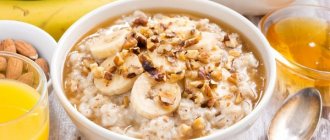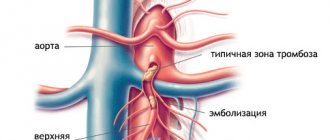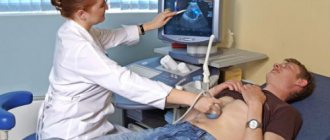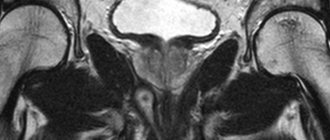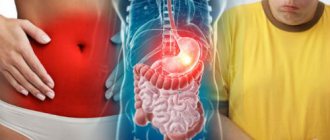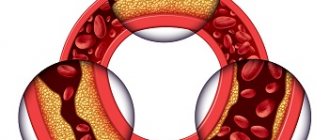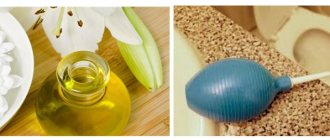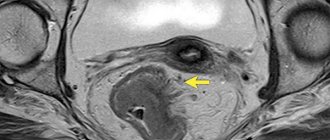The deposition of food debris in the colon over a long period of time creates the formation of fecal stones, the retention of which contributes to problems with defecation and disruption of the normal functioning of the organs of the anatomical system. According to alternative medicine, a lemon enema is an ideal way to combat persistent constipation, heaviness in the abdomen and intestinal problems. However, it should be remembered that a lemon enema for colon cleansing is not recommended by doctors. A lemon enema is carried out after preliminary consultation with a specialist in order to exclude possible contraindications.
Enema cleansing procedure
Walker colon cleansing enema. First, prepare 2-3 liters of boiled water. The most suitable time for the procedure is 5 – 7 am, according to biological rhythms.
If you do not have the opportunity to carry out this procedure at this time, then it can be done at night. Add 1 - 2 tablespoons of apple cider vinegar or lemon juice to two liters of water. If you have neither one nor the other, you can replace them with regular citric acid by dissolving a pinch of acid in water. It's good to add garlic water. To prepare it you will need one clove of garlic. It should be crushed, pour a glass of cold water, mix it all, strain, pour into the solution prepared for the enema. The acidic environment and garlic water help destroy pathogenic bacteria.
Pour the solution prepared in this way into Esmarch’s mug. Lubricate the tip or tip of the hose with vegetable oil.
It is not recommended to do a cleansing enema using a “pear”, because the volume of the pear is very small and insufficient to cleanse the large intestine. If you introduce water with a pear several times, it will irritate the anal sphincter, which will cause a desire to empty the intestines, as a result, the water will pour out, cleansing will not bring any effect. Moreover, water must enter the intestines slowly, which cannot be achieved using a pear.
Hang the mug so that the hose does not stretch when inserting the enema tip into the anus. Take a knee-elbow position. To be more precise, kneel down and lean on one elbow, and insert the tip with the other hand.
If you suffer from hemorrhoids, insert the tip with extreme caution. After successfully inserting the tip, raise your pelvis, lower your head lower and breathe deeply, take a deep breath, exhale briefly through your mouth. The more actively you breathe, working with your diaphragm, the faster the water will flow into the rectum.
If you suddenly feel pain in the intestines, but not all the water has poured in, then, without pulling out the tip, turn off the faucet or clamp the hose with a clothespin, and massage your stomach upward with massage movements. Then get down on your knees again and the procedure can be continued. You need to add all the water.
After the water has poured in completely, pull out the tip, place a special pad in the anus, try to hold the water for at least 10 minutes. If there is pain or a feeling of fullness, stroke your stomach clockwise. If you succeed, you can, of course, walk not far from the toilet or lie on your stomach. Most likely, it will be quite difficult for a person doing this procedure for the first time to retain water. To avoid severe bloating, try to empty your intestines naturally before starting the procedure. If it doesn’t work, then insert a suppository for hemorrhoids.
While sitting on the toilet, massage your stomach, trying to feel your intestines with your fingers. If a gurgling sound is heard, this indicates that not all of the water has come out.
The colon cleansing procedure should be taken seriously. There should be enough time for this; if you have little time, then the procedure should be postponed until a more suitable time. Add water slowly. It is very important that all the water comes out, since, remaining in the intestines, it will be absorbed into the feces and cause harm to the body.
You can call it a successful cleanse if you feel empty in your stomach and light in your body. Otherwise, if you do not feel relief, but there seems to be something left in the intestines, then repeat the procedure. It is necessary to ensure that everything comes out of the intestines.
People suffering from chronic constipation are advised to rinse their intestines before a cleansing enema. To do this, do an enema with 0.5 liters of water; you do not need to hold the water in yourself, but release it immediately. This can be done 2 - 3 times. After this, add water to Esmarch’s mug and perform a cleansing enema as described above. Not forgetting that the water must be boiled and cooled to 39 °C.
Many more practitioners recommend, along with an enema, to eat a clove of garlic every day for 1-2 weeks, in the absence of contraindications to garlic (stomach ulcer, heart disease, etc.) in the morning on an empty stomach. It must be chewed or sucked thoroughly so that it mixes well with saliva. After this, swallow it, if you cannot chew it, then crush it or grate it, hold it in your mouth, accumulating as much saliva as possible.
Only after one hour you can have breakfast, but not earlier. Do the same in the evening, 2 hours after the last meal, eat garlic after that, do not eat or drink anything else. Garlic helps destroy putrefactive bacteria in the intestines. Taking garlic may cause stomach pain. In order not to damage the gastric mucosa, garlic should be chewed very thoroughly, mixed with saliva. In cases of heartburn, take freshly squeezed potato juice before meals 1 - 2 times a day, 2 tablespoons.
It is recommended to cleanse the intestines 1 – 2 times a year: in early spring and early autumn. Side effects possible during colon cleansing; pain, constipation, diarrhea and so on.
A decoction of chamomile and sage is also very good for a cleansing enema. Pour hot water over one tablespoon of chamomile and sage and boil for three minutes.
It is also good to use a decoction of the following herbs for a cleansing enema: yarrow, sage, oregano, calendula, chamomile, birch leaves, dill seeds, and large plantain.
Recipes for enema solutions
To prepare an effective and safe medicinal product, strictly adhere to the recommended dosage of the components in the solution.
Classic with lemon juice
A course of treatment using a clyster based on freshly squeezed lemon juice is effective for weight loss. The result is achieved by cleansing the inner walls of the intestines from toxins and supplying them with nutrients. To prepare the solution, add 50 ml of freshly squeezed lemon juice to a liter of boiled water at a temperature of 36–37 °C.
To increase the effectiveness of antiparasitic treatment, add garlic water to the prepared solution. Mix the juice of 1 clove of garlic (pass through a garlic press) with a glass of prepared water, and after mixing and straining, add fresh lemon juice to the resulting composition.
Walker Cleanser
The basis for the effectiveness of the method is the correct choice of timing. Dr. Walker considers the time from 5 to 7 am the most suitable for carrying out manipulations from the point of view of the body's biological rhythms.
To cleanse the large intestine, strictly follow the recommended ratio of components. To prepare the solution, mix 2 liters of prepared water with 1–2 tbsp. l. fresh lemon juice or apple cider vinegar.
Enema according to Gerson
Clyster according to Gerzon is prescribed for severe intoxication, when the body needs to be cleansed of a large number of toxins, and the prescribed medications contain a certain amount of toxic components.
Cleansing enemas according to Gerson are carried out for 1–1.5 weeks. In the first week, the number of procedures is 6–8 per day; subsequently, the intensity of the effects is reduced to one enema over several days. The recipe for preparing the solution involves mixing 1.5–2 liters of prepared water with 3–4 tsp. fresh lemon juice, 100 ml of green coffee decoction and a glass of beet juice. Adding beet juice helps normalize intestinal motility, prevent constipation and dysbiosis.
Honey solution
Honey
A composition based on lemon juice and honey is recommended for removing toxins from the body, stimulating the functioning of the gallbladder, adrenal glands, and normalizing the tone of the colon mucosa. To prepare the solution, observe the proportions of the components.
Dissolve 1 tbsp in 200 ml of warm boiled (36–37 °C) water. l. honey and add 1 tbsp. l. freshly squeezed lemon juice. For the effective action of the composition, after administration, the solution is retained inside the intestine for 10–15 minutes.
Enemas with additives
Enemas with additives work much better than ordinary enemas.
Hypertensive enema. Use a solution of table salt or magnesium sulfate. Prepare the following solution: 1 teaspoon of salt or 2-3 teaspoons of magnesia per 0.5 cup of water. For an enema, the temperature should be 24-26 °C. This solution has a highly irritating effect on the intestinal mucosa; after half an hour it will cause profuse stool.
Gerson enema. The essence of this method is that 6 to 8 enemas are performed in one day. Boiled water is cooled to a temperature of 38 °C, green coffee decoction and lemon juice are added. G. Shatalova made additions to the initial recipe, now it looks like this: the volume of water is 1.5 - 2 liters, 0.1 liters of coffee, 3 - 4 teaspoons of lemon juice and a glass of beet juice. This procedure is carried out for 7–10 days, after which the number of enemas is gradually reduced. In the end they are done in a day or two. These colon cleansing enemas are recommended for people undergoing treatment with mildly toxic or poisonous medications when there are a lot of toxins in the blood.
Beetroot enema. 500 - 800 grams of raw beets are peeled, finely chopped or grated and poured with 1 - 1.5 liters of boiling water. Leave in a warm place for 20-40 minutes. Strain, cool to the desired temperature. This enema is recommended for the treatment of chronic constipation, normalizes intestinal motility, and treats dysbiosis. After carrying out such enemas from 5 to 12, the stool becomes regular and is compared with the amount of food intake. Since its effect is very mild, it can also be used by children.
Herbal enemas. The name of these enemas speaks for itself that decoctions of various herbs are used for enemas. They are used to remove gases and as a weak astringent. After the solution is injected into the rectum, you need to lie on your right side and wait for the solution to be absorbed.
Preparing for intestinal colonoscopy
To successfully implement the diagnostic procedure, special preparation for bowel cleansing is required. Preparation for the procedure begins 3-5 days in advance.
The diet completely excludes fruits and vegetables in any form: cabbage, legumes (beans, peas, beans), potatoes, radishes, tomatoes, onions, etc., cereals (porridge) in any form, seeds, nuts, milk, jam with seeds, including small ones (currant, raspberry), grain bread, berries, including in yoghurts and baked goods. Do not take activated carbon and iron supplements!!!
You can eat: sour-milk products, broth, lean meat, preferably boiled (including poultry), white bread, butter, low-fat fish (carp, pike perch, river trout), eggs no more than 1-2 pieces. per day, cheese, cottage cheese, diluted juices without pulp, jelly without berries, tea.
If you suffer from constipation, you need to take the laxatives you usually use; you should have bowel movements every day for a week before the test.
Colon cleansing
In many cases, it is quite difficult to independently perform high-quality bowel cleansing with enemas, especially in the presence of anal fissures or inflamed hemorrhoids. In such cases, you can use one of the proposed preparation schemes (on the eve of the test day).
Colon cleansing without enemas
Preparation with Fortrans - 3-4 packets of Fortrans are purchased at the pharmacy (1 packet per 20 kg of body weight). 1 packet is dissolved in 1 liter of water (boiled or still mineral). Drink the solution gradually, 1 liter over 1 hour, 1 glass over 15 minutes.
- At 13.00 – last meal of liquid or semi-liquid food, exclude dinner
- 15.00-19.00 – take Fortrans 4 l.
About an hour after you start taking it, you will have painless, loose stools.
You cannot change the proportions (reduce the amount of liquid)!
Bowel movement will end with the release of clear or slightly colored liquid 2-3 hours after taking the last dose of Fortrans.
The solution has a sweet and salty taste. To improve the taste of Fortrans, it is better to drink it chilled and squeeze a slice of citrus fruit into the solution.
Preparation with castor oil and enemas
(least preferable - only in case of complete intolerance to the above drug).
On the eve of the study at 13.00 - the last meal of liquid or semi-liquid food. At 14.00 – drink 40 g of castor oil. Then at 20.00-21.00 after defecation (liquid stool), give 3 enemas with a volume of 1.5-2 liters with an interval of 30-40 minutes each. On the morning of the study, 2 enemas of 1.5 liters each.
On the day of diagnosis, perform a cleansing enema before the procedure so that there is no feces in the stool.
Immediately after the procedure, you can drink and eat, and there is practically no pain. The most important thing is to strictly follow all the doctor’s recommendations and thoroughly prepare for the examination.
You can make an appointment with a therapeutic and diagnostic endoscopist through the contact form on the website or by calling +7 (4822) 415-500
If it is not possible to cleanse the intestines with enemas
In addition to enemas, there are many natural remedies that can cleanse the intestines. This is bran and fiber. The best source of dietary fiber is bran. Fiber promotes contraction of the intestines, which mechanically cleanses the intestines of fecal stones.
The method of use is as follows: stir 3 or 4 tablespoons of bran in a glass of kefir or yogurt; you can also use other liquid. Leave to steep for 3 – 5 minutes. Divide the daily dose into 2 or 3 doses. Can also be added to food: in soups, porridges or as a breading material. Bran can be consumed every day for a long time.
The benefits of celery for men and women - 10 scientific facts!
An enema for cleansing the intestines at home (klystir) is an inexpensive, uncomplicated and very effective way to cleanse the intestinal mucosa of blockages, toxins and waste remaining on the walls of the colon during the digestion process. The accumulation of toxins in the intestines occurs from poor nutrition, a sedentary lifestyle and nervous stress. Over time, up to ten kilograms of fecal stones and polyps can form in the colon.
In case of stool disorders, which are expressed in difficult and irregular bowel movements, feces accumulate in the large intestine. In this case, the toxic substances contained in them are absorbed into the blood. A deep cleansing of the colon with an enema will help avoid this.
Preparing for a colon cleanse
Clyster for home use
After checking that there are no contraindications, the doctor provides the patient with recommendations for preparing to use the clyster at home. Advice from the therapist before starting treatment (7 days):
- Avoid using diluted citric acid - stock up on fresh lemons before starting the procedure;
- purchase an Esmarch mug with a capacity of 2 liters and master its use or prepare a home enema;
- adjust your diet: exclude smoked foods, pickles, sweets, fatty foods;
- Do not eat food on the day of the cleanse.
Use an enema with lemon juice at 5–7 am or at 8–11 pm.
Note! The evening procedure is carried out on an empty stomach, after defecating naturally.
Purgation
The benefit of cleansing enemas is that they quickly flush out all accumulated toxins from the intestines, improve the absorption of nutrients and normalize the functions of the gastrointestinal tract. With the help of enemas, you can not only cleanse the large intestine yourself, but also improve the general condition of your body.
Enema cleansing is performed only for the large intestine. For the small intestine, this procedure is not necessary, since the rate of contraction of the walls of the small intestine (peristalsis) is much higher than that of the large intestine. Due to slow peristalsis of the colon, the movement of the food bolus worsens, and some of the digestive products settle on the intestinal walls. The elimination of digestive products slows down, which becomes a source of toxins.
Poisoning with toxins causes a person to feel unwell; a colon clogged with waste and toxins can cause various diseases. It is recommended to periodically cleanse the intestines. This is especially true for those who move little and consume a lot of flour, protein, fried, and smoked foods.
Products that contain yeast are especially harmful to the gastrointestinal tract: fresh yeast baked goods and all kinds of confectionery products. Such products, passing through the large intestine, leave a film of feces on the walls. Over time, this film becomes thicker, fecal stones appear, and the process of rotting begins.
Fecal stones never come out naturally; all wastes and toxins slowly decompose and poison the body.
After a course of cleansing enemas, fecal stones are exfoliated and removed from the colon. By giving yourself a therapeutic course of intestinal cleansing, a person can lose up to several kilograms of weight, overall health improves, and chronic fatigue disappears. Sometimes it happens that a patient suffering from some disease recovers without additional treatment after cleansing enemas.
Symptoms
An adult needs to cleanse the colon if the following symptoms are observed:
- smell from the mouth;
- bloated stomach;
- bowel dysfunction (constipation, irregular bowel movements);
- frequent headache;
- fatigue, general weakness;
- feeling of heaviness in the abdominal area;
- pain in the lower back and joints;
- allergic skin rashes;
- frequent colds.
A typical symptom of a clogged colon is a sagging belly with no obvious fat layer. This is a sign of accumulated fecal stones, which must be removed with a cleansing enema.
Contraindications
Contraindications to this procedure are: any infectious and inflammatory diseases of the gastrointestinal tract (tumors, ulcers), circulatory disorders, frequent fainting, etc. Before using a cleansing enema, you should consult a gastroenterologist. If the doctor prescribes any examinations, you need to undergo them to eliminate all risks. Otherwise, cleansing the intestines may not bring benefit, but harm to the body.
Diseases for which it is strictly forbidden to clean the colon with an enema:
- intestinal oncology;
- stomach ulcer;
- chronic diseases in the acute stage;
- severe anemia;
- renal or heart failure;
- high blood pressure;
- suffered a heart attack or stroke;
- pregnancy or lactation;
- menstruation;
- vaginal or rectal prolapse;
- haemorrhoids;
- colitis in the acute stage;
- dysentery;
- severe dysbacteriosis;
- abdominal pain;
- indigestion, nausea;
- infectious or colds with high fever.
Contraindications for lemon enema
The medical procedure does not pose a health hazard provided it is performed correctly. It should also not be considered an alternative to regular cleansing. Introducing the solution through the anus cannot be an attempt to treat abdominal pain or intestinal obstruction. A lemon enema will be effective if it is performed at long intervals and with the prior consent of the attending physician. However, there are medical contraindications to its implementation:
- inflammation and perforation of the intestine,
- intestinal obstruction,
- failure of the circulatory system,
- kidney disease,
- cystitis,
- nausea,
- abdominal pain of unknown cause,
- fever and increased body temperature.
Read also: Liver hemangioma - what it is, causes, symptoms and treatment
You should be aware that frequent repetition of an enema can disrupt the normal functioning of the intestines and its water and electrolyte balance, and also lead to heart problems. Take care of yourself and always be healthy!
Stages of the cleansing course
The colon cleansing course is carried out in three stages:
- Therapeutic diet.
- Cleansing enemas.
- Restoration of microflora and peristalsis of the colon.
Diet
A week before cleansing the colon with enemas, it is necessary to adjust the diet and prepare the body for cleansing. It is recommended to limit your intake of sugar and salt and eat healthy foods.
Food Comparison Chart Before Cleaning:
| Eliminate from diet | Add to diet |
| Meat and fish | Berries, fruits |
| Dairy | Vegetables |
| Bread and confectionery | Fresh juice |
| Products containing starch | Dried fruits compote |
| Spicy, salty, smoked foods | Nuts, seeds |
| Cocoa, coffee, tea, alcohol | Bran |
This diet must be followed throughout the course of colon cleansing. In addition, you can eat low-fat fermented milk products. You are allowed to drink only clean water, decoctions and herbal infusions. During this preparatory period, you should take thermal procedures: visit a bathhouse or sauna 2 times a week, or take a hot bath.
Cleansing enemas
How to do a cleansing enema yourself? Esmarch's disposable mug is a disposable consumable for medical procedures with a volume of up to two liters, which can be purchased at a pharmacy. The price of a disposable Esmarch mug is from 80 rubles. Before using and introducing liquid into the intestines, it is necessary to disinfect the disassembled mug using neutral detergents. Then place the tips in a 3% solution of chloramine or hydrogen peroxide for an hour and a half. After treating parts of the device, rinse them under running water.
Pear-shaped syringes are also used to cleanse the intestines. The volume of syringes is 50 - 700 ml, they are used for intestinal lavage in children or before a rectal examination.
In order to cleanse the colon yourself at home using an enema or an Esmarch mug, you need to use only boiled water. Up to two liters of warm water are poured into Esmarch's mug. The tip must be lubricated with vegetable oil, Vaseline or baby cream. The mug is suspended at a height of up to one and a half meters.
Which side is better to lie on during a cleansing enema, and how long should you keep fluid in the intestines after it?
To properly perform an enema, a person should lie on his left side and pull his knees towards his stomach, or stand on his knees and elbows. The enema tip should be carefully inserted into the anus, open the tap, or squeeze the liquid out of the syringe. If water does not pass into the intestine, you need to move the tip, make sure that the hole is not clogged and ensure pressure.
Technique for performing a cleansing enema
Before performing the procedure, prepare the means used and equip the place for the manipulation. Usually a trestle bed covered with oilcloth is used. A bucket is placed below to drain liquid that the sphincter cannot retain in the area of the intestinal lumen.
Note! The Esmarch mug is used for manipulations during inpatient treatment. The participation of one more person is required to open the tap after installing the tubes and to close it after 1.5 liters of the drug has flowed out.
Before carrying out the procedure, ensure that the enema tip is treated, followed by lubricating its surface with a disinfectant solution or alcohol.
How to perform an enema for children over 12 years of age and adults:
- Take the body position necessary to perform the procedure. When performing manipulations at home, a suitable position is lying on your right side, with your legs pulled up to your stomach. When performing an enema using an Esmarch mug, a knee-elbow position is used, followed by “shaking” of the introduced solution, or the drug is administered in a supine position in a water-filled bath.
- Draw up the prepared liquid by squeezing the enema bulb. The intestines of a healthy person can hold up to 3.5 liters of liquid. It is recommended to start with using small doses of the drug.
- Lubricate the tip (tube) of the enema and the anus with Vaseline to facilitate insertion of the device and prevent damage to the intestinal mucosa.
- Insert the tip of the rectal tube into the intestines to a depth of 10 cm. The Esmarch mug is placed at a height of 1–1.5 m above the level of the trestle bed in a position that will prevent the tip from being pulled.
- Squeeze the rubber bag of the bulb to introduce the solution into the intestines or open the tap in Esmarch's mug. You should not squeeze the bulb until the volume is completely empty: there is a risk of compressed air getting in, which will cause pain.
- After administering the solution, ensure fluid retention by tightly squeezing the buttocks and tensing the sphincter muscles for 5–10 minutes. To soften and remove feces, a circular abdominal massage with light pressure is recommended. You can perform several torso bends and squats to provoke the urge to defecate.
- Depending on the contamination of the colon, manipulation is carried out up to 4 or more times. Therapy using clyster is performed until the body begins to excrete clean water.
When performing the procedure, an infant is allowed to use microenemas with a solution based on lemon juice with a volume of no more than 50 ml. If the child reacts negatively, the procedure is stopped. The amount of liquid introduced into the intestinal area depends on age: at 3–4 years old, the volume should not exceed 1.5 liters; for children 9 years of age, up to 3–3.5 liters are allowed.
Microclyster
With a microenema, unlike a regular enema, a small volume of liquid is injected into the intestines. But the solutions can be varied: oil and oil mixtures, herbal mixtures, etc. Microenemas require a syringe or bulb and oil to lubricate the tip as in a normal procedure. Several recipes for microenemas:
- 1 tablespoon of flax seeds is poured into a glass of boiling water and left for 2-3 hours. For the procedure, 50 ml is used. warm infusion. This microenema can be done 2-3 times a day;
- inject 30 ml. castor oil and keep inside for as long as possible;
- mix 1 teaspoon of aloe juice and 2 tablespoons of olive oil;
- Boil 1 tablespoon of oats in two glasses of boiling water, divide into 2 parts. Mix well 1 tablespoon of flaxseed oil and 1 teaspoon of salt;
- You can use warm herbal decoctions of chamomile, mallow and lemon balm (100 – 200 mg.)
Alternative Cleansing Methods
An alternative method of colon cleansing without enemas is to stimulate bowel movements. This method is very effective and gives quick results. This includes:
- Drinking a saline solution is the easiest way to cleanse the colon. For this, table salt, or better yet sea salt, is used. To prepare the solution, you need to dissolve 3 tablespoons of salt in a liter of clean water. Place the solution on the fire and stir until the salt is completely dissolved. Drink the resulting liquid on an empty stomach within an hour. Saline solution is effective in combination with exercises. Therefore, after each drink you should do special exercises for 6-7 minutes. You cannot eat after the procedure for two hours. This cleansing can be done once every two weeks. In addition to the cleansing effect, the saline solution has a laxative effect on the intestines.
- herbal cleansing – medicinal herbs can be used internally. Many herbs have diuretic, bactericidal and laxative properties, promote the removal of waste and toxins, and restore intestinal microflora. There are many recipes for colon cleansing. Herbal mixtures can consist of various components. Ready-made dry mixtures can be purchased at pharmacies. To normalize digestion and cleanse the intestines, the most effective herbs are:
- immortelle;
- elecampane;
- chamomile;
- calendula;
- parsley;
- Rowan;
- flax seed;
- sage.
You can cleanse the intestines with the help of medications. Such drugs are prescribed by a gastroenterologist. One of these medications is Fortrans, a laxative drug. For a deep and complete cleansing of the colon, you need to dilute 3-4 packets of the product in 3-4 liters of water. Drink this amount of solution over 3-4 hours in portions of 200 - 250 ml. In an hour, the expected effect from the product will be obtained, lasting up to 10 hours.
Phonation
An alternative to an enema is the newest and best way to cleanse the intestines - phonation. This is a special massage that stimulates the intestinal walls, improves blood circulation and promotes the detachment of toxins and deposits from the walls of the colon.
The procedure is carried out using a vibroacoustic device that affects alternating vibrations. Movement stimulates muscle contraction and improves metabolic processes. Phonics cleanses the intestines and increases muscle tone of the walls of the colon. Approximately 60 minutes after the procedure, toxins are removed from the body with feces.
The now fashionable hobby of cleansing the intestines with enemas has many important nuances.
Consulting is Oleg Vladimirovich Golovenko, Candidate of Medical Sciences, senior researcher at the gastroenterology department of the State Scientific Center for Coloproctology of the Ministry of Health of the Russian Federation.
– There are now many proposals for intestinal cleansing. The only difference is the price. Sometimes you’re simply amazed: what they don’t promise to get rid of with the help of miraculous enemas. Moreover, they offer not just a banal enema, but with the addition of lemon juice, coffee, grass, wheat and other “interesting” ingredients. Let's, following common sense and basic rules of medicine, figure out what lies behind these promises. They promise: “During cleansing, nutrients and vitamins are absorbed from the large intestine.” In practice. Only water is absorbed in the colon. Microelements, proteins and carbohydrates - only in small quantities. 95 percent of vitamins and nutrients are absorbed exclusively in the small intestine, where water from the device cannot penetrate in any way, because there is a special valve between the large and small intestines. Some essential vitamins are synthesized by microbes that live in the intestines, and rinsing them will simply remove them. They promise: “Removing toxins and poisons from the intestines.” In practice. During the digestion process, toxic substances are formed in the intestines, which are absorbed into the blood and immediately enter the liver, where they are neutralized, unless the person is a chronic alcoholic or suffers from cirrhosis of the liver. They promise: “Cleansing helps prevent many diseases, including such serious ones as colon cancer, diverticulitis, ulcerative colitis, hemorrhoids.” In practice. These diseases have nothing to do with slagging. Incorrect diet and regimen lead to colon cancer. An enema will not prevent hemorrhoids, since it is caused by hereditary weakness of connective tissue, heavy physical activity, sedentary work and a preference for spicy foods. The development of the other listed diseases is associated with severe disorders of the immune system and aggravated heredity. They promise: “Colon cleansing is an excellent detoxification method in the treatment of alcoholism and drug addiction.” In practice. The effect is insignificant. Any narcologist or anesthesiologist will say that the essence of the fight against drug withdrawal is the displacement of the drug from the receptors. For this purpose, special medications and droppers are used, but not enemas. Thus, even cleansing enemas in our country are the subject of commercial speculation. By the way, I note that we owe the very idea of cleansing the intestines to the ancient Egyptians, who were the first to say that all diseases begin in the intestines. In our country, the ancient Egyptian idea became quite widespread and was partly transformed into the concept of dysbacteriosis. – All this, of course, is very interesting, but let’s return to our women. Many of them claim that cleansing enemas lead to a rejuvenating effect - toxins are washed away, skin condition and complexion improve. - It is a myth. Practice has shown that after colon hydrotherapy, many people’s condition does not improve, but, on the contrary, worsens. Abdominal pain, bloating, and other negative sensations appear. A positive effect, if achieved, can only be temporary. The so-called “pacifier effect” occurs when we convince ourselves that we feel better. In addition, after cleansing the intestines, as a rule, special diets are recommended, the person begins to follow them and generally takes more care of his health. And this is much more important than the procedure of cleansing the intestines with the help of enemas, and even more so with other tools. After all, what is intestinal cleansing? Several liters of liquid are injected into it through the rectum. And colonic lavage is potentially dangerous. Insertion of the tube may cause cramps and pain. If the instruments are not very sterile, infections can be transmitted through them. There have been cases of electrolyte imbalance in the body and serious damage due to excessive absorption of “gargling” substances into the blood. - So, enemas are not needed at all? – It is better for healthy people to refuse them - they do not represent any preventive value. On the contrary, they flush out microflora from the colon. It has now been proven that microbes that “live” in the intestines produce a lot of substances beneficial to the body. Including butyric and acetic acids - extracts for the epithelium of the colon. As they are washed out, inflammation can develop, which will ultimately lead to a serious illness - colitis. Excessive enthusiasm for enemas can turn into addiction, and then you will no longer be able to do without an enema. In addition, there is such a thing as irritable bowel syndrome, which, unfortunately, many people now suffer from. The basis of the disease is a violation of coordinated contractions of the colon, which can be accompanied by abdominal pain, bloating, constipation, alternating constipation with diarrhea. So, very often they resort to enemas. And in vain, because the pain will only get worse. – In what cases can an enema still help? – Exclusively for constipation. Moreover, as a necessary measure when other means do not help. First, try to combat constipation without an enema - with a fiber-enriched diet, an active lifestyle, and laxatives. True, the latter must be treated with caution. So, preparations from Alexandria leaf can have a good effect. But they have the ability to irritate the intestines, so you should not take them for a long time. If all these measures do not bring the desired result, only then can you resort to a cleansing enema. Not even an enema, which involves a large volume of liquid, but stimulating micro-enemas, designed for no more than 100 ml of solution. They are useful for constipation, as well as for concomitant hemorrhoids and fissures. – When and how often should this procedure be carried out? – It’s better in the morning, and you can do it every day – until you develop a rhythm in which you can do without an enema. A hearty breakfast is required first. The diet must include vegetable salads, buckwheat, juice, and fermented milk products. After 15-20 minutes, make a micro-enema - mix 50 ml of water at room temperature and 50 ml of vegetable oil. Instead of water, you can use a chamomile solution. Prepare it in the evening: one tablespoon of the plant per glass of boiling water. After making a micro-enema, go to the toilet, even if you don’t feel the urge yet. Do not sit cozy and comfortable, but on the contrary, climb onto the toilet with your feet and, actively massaging your stomach, try to empty your intestines. You can also use breathing exercises for this - help yourself with sharp, intermittent and prolonged inhalations and exhalations. – How to massage your stomach? – You can just use your hand, but it’s better to use a tennis ball – in a circular motion from right to left – from the appendix clockwise. And so on, day after day, until a normal rhythm is established with problem-free bowel movements every morning. – In what other cases is it possible to use an enema? – Most pregnant women usually suffer from constipation. You can help yourself with microenemas. but in the last months of pregnancy it is better to avoid them. After all, the uterus is still stimulated, and inept actions can lead to undesirable consequences, including miscarriage. An enema can be given to bedridden patients, because laxatives often do not help them. Courses of cleansing microenemas are practiced in sanatoriums using medicinal herbs. But this happens under strict medical supervision and only in cases where the patient has been fully examined and organic pathology has been excluded. An enema is done when you are sure that a serious illness is not hidden behind the mask of a mild ailment. And finally, there are people for whom an enema is the only way to cleanse the intestines. These are those who suffer from congenital pathologies of the colon. They are faced with an alternative: either an enema or surgery. In all other cases, I repeat once again, cleansing enemas can be resorted to only as a necessary measure when other methods do not help.

